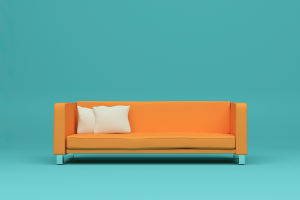Classical style decoration has always been synonymous with elegance, sophistication, and timeless beauty.
This design approach draws inspiration from ancient Greece and Rome, blending symmetry, order, and a sense of grandeur.
Today, modern interpretations of this vintage charm allow homeowners to create spaces that are both contemporary and steeped in history. Here’s how to bring the classical style into the modern era while preserving its timeless allure.
1. Foundational Elements
Classical design is built on a foundation of symmetry and proportion. In a modern home, this can be achieved by arranging furniture and décor items in a balanced manner. Start with a central focal point, such as a fireplace, a piece of art, or a grand piano. Arrange furniture symmetrically around this focal point to create a harmonious and visually pleasing layout. This sense of order is crucial to capturing the essence of classical style.
2. Color Palette
The color palette in classical décor is typically subdued and sophisticated. Think of soft, muted tones such as cream, beige, taupe, and pale pastels. These colors serve as a neutral backdrop, allowing other design elements to shine. For a modern twist, consider incorporating bolder accent colors like deep navy, emerald green, or rich burgundy. These hues can add depth and contrast while maintaining the overall elegance of the space.
3. Materials and Textures
Classical interiors often feature luxurious materials and textures that exude opulence. Marble, rich woods, and sumptuous fabrics like velvet and silk are staples of this style. In a modern interpretation, these materials can be used in more subtle ways.
For instance, a marble coffee table or countertops, wooden furniture with intricate detailing, or velvet throw pillows can add a touch of vintage charm without overwhelming the space. Mixing these luxurious materials with modern elements such as sleek metals or glass can create a balanced and contemporary look.
4. Architectural Details
One of the hallmarks of classical design is its attention to architectural details. Cornices, columns, and moldings are all features that add character and sophistication to a room.
In a modern home, these elements can be simplified and streamlined. For example, instead of ornate, heavily detailed moldings, opt for cleaner lines and less intricate patterns. Incorporating these subtle nods to classical architecture can elevate the overall design without making it feel dated.
5. Furniture and Décor
Furniture in a classical style is typically elegant, with graceful lines and detailed craftsmanship. Modern interpretations can maintain these characteristics while embracing contemporary trends. Choose pieces that have a classical silhouette but are updated with modern fabrics or finishes. For example, a traditional Chesterfield sofa in a contemporary fabric or a sleek, modern dining table paired with classic chairs can achieve this balance.
Décor items should also reflect the blend of old and new. Antique or vintage-inspired accessories like mirrors, chandeliers, and candlesticks can be paired with contemporary art or minimalist décor pieces. This mix creates a curated, layered look that is both sophisticated and personal.
6. Lighting
Lighting plays a crucial role in classical interiors, often featuring grand chandeliers and elegant sconces. To modernize this aspect, consider using chandeliers with a contemporary twist, such as those made from unexpected materials like metal or glass. Wall sconces can also be streamlined with simpler designs that still evoke a sense of elegance. Additionally, incorporating modern lighting solutions like recessed lighting or LED strips can provide functionality while enhancing the classical aesthetic.


